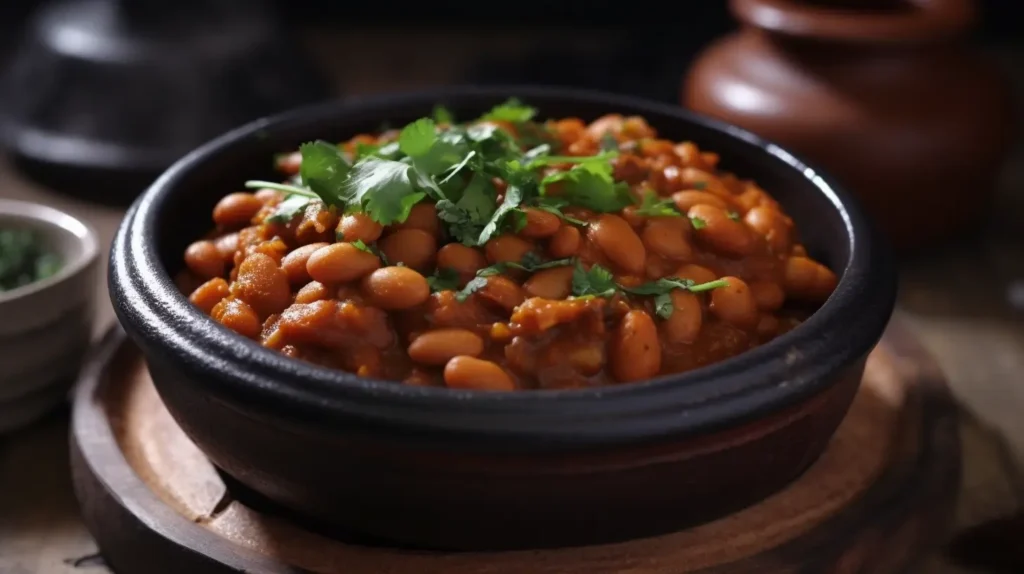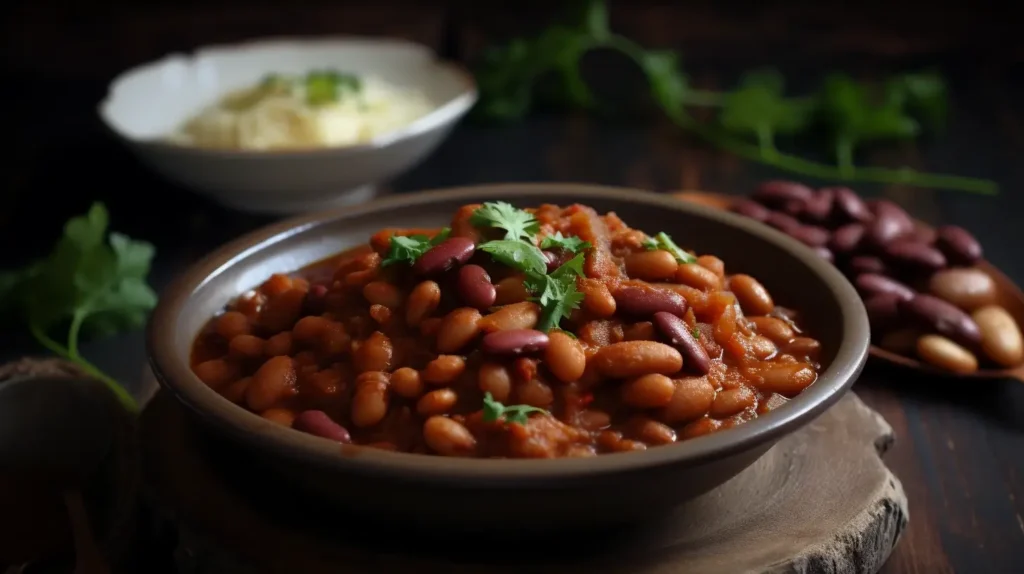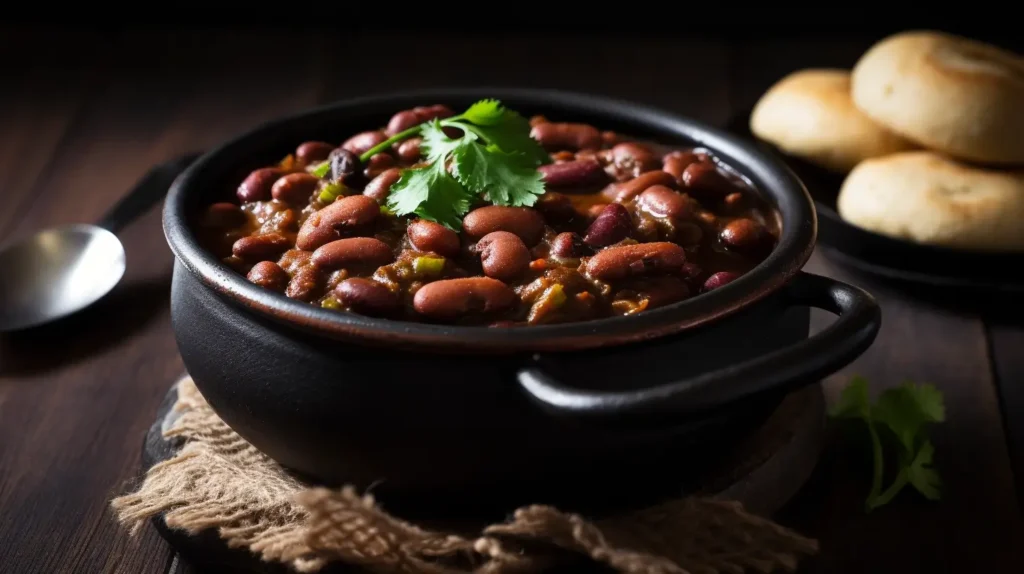Table of Contents
Indian Bean Recipes: Delicious and Nutritious Ideas for Every Meal

Beans are a staple in Indian cuisine, celebrated for their versatility, rich flavors, and numerous health benefits. From the beloved rajma masala to innovative sprouted salads, Indian bean recipes offer endless possibilities for creating nutritious and delicious meals. Whether you’re exploring regional specialties or trying something new, these recipes bring both comfort and nourishment to your table.
Beans in Indian Cooking: A Nutritional Treasure
Beans, known locally as pulses or legumes, are essential to the Indian diet. Their high protein content, coupled with fiber and essential minerals, makes them a fantastic choice for meals. Common varieties include:
- Kidney beans (Rajma)
- Chickpeas (Chana)
- Black-eyed peas (Lobia)
- Mung beans
- Green beans
These staples are not only nourishing but also incredibly versatile in recipes. For more comforting ideas, explore Indian Winter Comfort Foods for a warm meal on chilly evenings.
Health Benefits of Indian Beans: More Than Just Protein
Indian bean recipes are nutritional powerhouses offering a range of health benefits. Rich in plant-based protein, they are a go-to ingredient for vegetarians and vegans seeking to meet their dietary needs. The high fiber content in beans aids digestion, promotes gut health, and helps maintain stable blood sugar levels. Additionally, beans are a great source of essential vitamins and minerals like folate, iron, magnesium, and potassium, which support overall health. Consuming beans regularly may reduce the risk of chronic diseases like heart disease and type 2 diabetes.
Traditional Indian bean recipes enhance these benefits by combining beans with spices such as turmeric, cumin, and ginger, which have their own medicinal properties. From sprouted mung bean salads to hearty lentil stews, incorporating beans into your meals can improve energy levels, support weight management, and contribute to a balanced diet. Whether enjoyed in a comforting dal or a spicy curry, Indian bean recipes offer a delicious and nutritious way to boost overall wellness.
Classic Indian Bean Recipes
Rajma Masala
A quintessential North Indian dish, rajma masala combines kidney beans with a fragrant tomato-based gravy. Indian Bean is traditionally paired with steamed rice, making it a wholesome and satisfying meal.
Dal Makhani
People often reserve this creamy, slow-cooked lentil and bean dish for special occasions. Made with black lentils and kidney beans, it pairs beautifully with buttery naan or parathas.
Creative Bean-Based Snacks for Busy Days
People can transform beans into quick, satisfying snacks, not just use them for main meals. Masala Sundal, made with boiled chickpeas stir-fried in spices, is a protein-rich option ideal for a midday boost. Another favorite is bean-stuffed samosas, where spiced lentils or kidney beans are encased in crisp pastry for a flavorful treat. Hummus-inspired dips made from chickpeas or black-eyed peas are excellent for pairing with veggies or flatbreads. For a baked option, try mung bean patties seasoned with Indian spices, which make a delicious and healthy snack. These creative uses of beans are not only nutritious but also incredibly versatile, making them perfect for busy lifestyles. Whether you’re craving something savory or looking for a protein-packed boost, bean-based snacks deliver on taste and health.
Indian Bean Desserts: Sweet Surprises with a Nutritious Twist
Beans in Indian cuisine aren’t limited to savory dishes; they also play a delightful role in desserts. Moong dal halwa, a rich and creamy dessert made with split mung beans, ghee, and sugar, is a popular choice during festivals and celebrations. Another beloved treat is besan ladoo, crafted from chickpea flour, sugar, and aromatic cardamom. For a unique twist, black-eyed peas can be transformed into sweet fritters or blended into puddings for a creamy texture. Sweetened kidney beans combined with jaggery and coconut make a comforting South Indian dessert called payasam.
These recipes showcase the versatility of beans, providing not only a sweet ending to meals but also the added benefits of protein and fiber. Whether you’re seeking traditional flavors or innovative sweet treats, Indian bean desserts offer a perfect balance of taste and nutrition, ideal for indulging guilt-free.
Indian Bean Soups and Stews: Warm Bowls of Comfort

Indian soups and stews featuring beans are the epitome of comfort food. Rajma soup, a creamy tomato, and kidney bean-based dish, is ideal for chilly evenings. Another popular option is dal shorba, a lentil soup infused with Indian spices like cumin and coriander, offering a warm and satisfying meal. Sambhar, a South Indian lentil stew enriched with vegetables, tamarind, and a medley of spices, is perfect for pairing with rice or idlis. These recipes are not only delicious but also incredibly nutritious, providing a wholesome balance of protein, fiber, and essential vitamins. Perfect for family meals or as a soothing dish when you’re under the weather, Indian bean soups and stews are easy to prepare and customizable to suit your preferences.
Meal Prepping with Indian Bean Recipes: Save Time, Eat Healthier
Meal prepping with Indian beans can simplify your week and promote healthier eating habits. Cook a big batch of versatile beans like chickpeas, kidney beans, or black-eyed peas and store them in the refrigerator for use throughout the week.
Pre-made rajma masala or dal makhani can serve as the base for quick meals; simply pair them with rice or bread for a complete dish. You can also portion out sprouted bean salads or bean-stuffed parathas for lunches. Preparing spice blends in advance further streamlines the process, ensuring you can whip up flavorful dishes in minutes. Meal prepping not only saves time but also reduces food waste, helping you stay organized and eat nutritious, home-cooked meals regularly.
Regional Bean Specialties
Gujarati Mixed Bean Curry
Known as Kathiyawadi curry, this recipe combines various beans like mung beans and chickpeas, simmered in a tangy tomato and spice blend. It’s a comforting dish, ideal for family meals.
South Indian Green Bean Poriyal
A lighter preparation, this stir-fried dish uses coconut and a tempered mix of spices like mustard seeds and curry leaves. It’s a perfect side dish for steamed rice and sambar.
Modern Twists on Traditional Indian Bean Dishes
Reinventing classic Indian bean dishes can bring exciting flavors to your table. Rajma tacos, for instance, pair spiced kidney beans with soft tortillas and fresh salsa for a fusion twist. Mung bean quinoa pulao is another modern creation, blending ancient grains with traditional Indian spices.
Chickpea pasta salads with tangy yogurt dressing add a refreshing spin to conventional flavors. Even dal makhani can be modernized by using coconut cream for a dairy-free version. These innovations retain the essence of Indian cuisine while catering to contemporary tastes and dietary needs. Whether you’re hosting a dinner party or looking for unique meal ideas, these modern bean dishes are sure to impress.
Quick and Easy Bean Recipes
For those pressed for time, beans can still shine in simple, healthy dishes:
- Sprouted Mung Bean Salad: A refreshing combination of sprouted beans, chopped vegetables, and a squeeze of lime.
- Masala Sundal: A quick stir-fry of boiled chickpeas with curry leaves and spices.
- Bean-Stuffed Parathas: Soft flatbreads filled with spiced mashed beans, ideal for breakfast or lunch boxes.

FAQs:
What beans work best for Indian recipes?
Popular choices include kidney beans, chickpeas, and black-eyed peas. They absorb spices beautifully, enhancing the flavor of curries and side dishes.
Can canned beans replace dried beans?
Yes, canned beans are a great time-saver. Ensure you rinse them thoroughly to remove excess sodium.
How to make beans more digestible?
Soaking beans overnight and cooking them with spices like cumin or ginger can help reduce bloating and improve digestion.
How long should I soak beans before cooking them?
Soaking beans before cooking is essential to improve their digestibility and reduce cooking time, making them perfect for various Indian bean recipes. For most beans like kidney beans, chickpeas, and black-eyed peas, soaking them for 6-8 hours or overnight is recommended.
Smaller beans, such as mung beans, may require only 4-5 hours. Ensure you rinse the beans thoroughly before soaking and change the water once during the soaking period to remove excess starch and impurities. If you’re short on time, a quick soak method involves boiling the beans in water for 2 minutes, and then letting them sit for an hour before cooking. Proper soaking not only ensures even cooking but also minimizes the risk of digestive discomfort, allowing you to create delicious and wholesome Indian bean recipes with ease.
What are some vegetarian bean-based meal ideas?
Vegetarian Indian bean recipes are both flavorful and protein-rich. Rajma masala served with steamed rice is a classic. Dal makhani, made with black lentils and kidney beans, pairs perfectly with naan or parathas. For lighter meals, try sprouted mung bean salads or masala sundals with chickpeas. Bean-stuffed parathas are another versatile option, great for breakfast or lunchboxes. Regional specialties like Gujarati mixed bean curry or South Indian green bean poriyal also offer delicious vegetarian choices. These dishes are not only satisfying but also nutritionally balanced, making them ideal for vegetarians seeking wholesome, flavorful meals.
Can Indian beans be frozen for later use?
Yes, cooked Indian beans can be frozen for later use, making meal preparation more convenient. After cooking the beans, allow them to cool completely before transferring them to airtight containers or freezer bags. Divide the beans into portion sizes for easy defrosting. Frozen beans can last up to three months and can be used directly in Indian bean recipes without the need for thawing. Simply rinse them under warm water or add them directly to your curry or stew. Freezing beans is a great way to reduce waste and save time, especially for busy weekdays when you need quick, healthy meal options. Whether you’re making dals, curries, or other Indian bean recipes, having pre-cooked beans on hand makes cooking easier and more efficient.
What spices pair best with Indian bean dishes?
Indian bean recipes are renowned for their vibrant and aromatic spice combinations. Commonly used spices include cumin, coriander, turmeric, and red chili powder, which form the base of many curries. Garam masala, a blend of warming spices, adds depth and complexity to dishes like rajma masala and dal makhani. For a tangy kick, amchur (dried mango powder) or tamarind paste is often used. Fresh ginger, garlic, and green chilies enhance the flavor and add a hint of heat. Whole spices like mustard seeds, curry leaves, and asafoetida are essential in South Indian bean recipes. These spices not only elevate the taste but also provide health benefits, making Indian bean recipes a feast for the senses and a flavorful addition to any meal.
What is the best way to store uncooked beans?
Proper storage of uncooked beans ensures they remain fresh and cook evenly, making them ideal for preparing delicious Indian bean recipes. Store beans in an airtight container in a cool, dry place, away from sunlight. Humidity can cause beans to absorb moisture, making them prone to spoilage or pest infestation. Glass jars or sturdy plastic containers are ideal for maintaining freshness.
If you purchase beans in bulk, consider dividing them into smaller containers to reduce the chance of contamination each time you open the container. While beans have a long shelf life, older beans may take longer to cook and could have a slightly altered texture, which may affect the consistency of certain Indian bean recipes. For optimal results, try to use beans within one year of purchase. Proper storage not only extends the beans’ shelf life but also ensures their flavor and nutritional quality are preserved for use in a variety of traditional and modern Indian bean recipes.